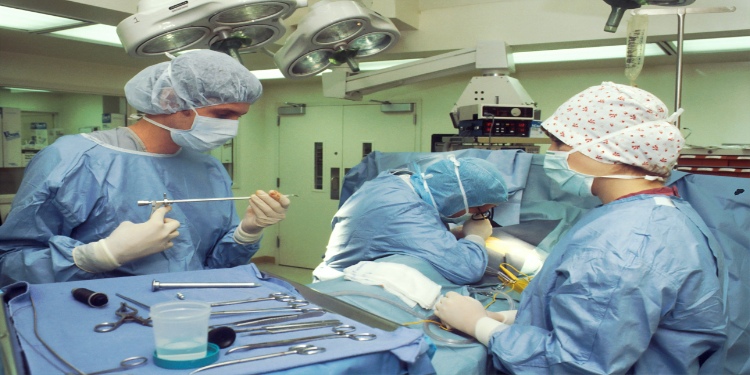The sterilization equipment market is set to reach $26.77 billion by 2031, with a robust compound annual growth rate (CAGR) of 8% from 2024 to 2031, according to the latest report by Meticulous Research®. This growth is primarily driven by advancements in sterilization technology, increasing regulatory focus on patient safety, and heightened demand from healthcare institutions globally.
Sterilization in Healthcare: A Growing Necessity
The rise in healthcare-associated infections (HAIs) and the increasing incidence of infectious diseases, such as those caused by multidrug-resistant organisms (MDROs), have underscored the need for reliable sterilization methods. Healthcare facilities rely on sterilization equipment to prevent the transmission of pathogens, ensuring the safety of both patients and staff. As the healthcare sector continues to expand, particularly in emerging markets, the demand for advanced sterilization equipment is set to rise exponentially.
Sterilization methods vary across industries, with healthcare focusing on heat, gas, radiation, and filtration-based techniques. These methods ensure the sterility of medical devices and environments, reducing the risk of infections transmitted via contaminated tools or surfaces.
Technological Advancements in Sterilization Methods
A significant shift in the industry is the growing adoption of Supercritical CO2 (scCO2) as an eco-friendly alternative to ethylene oxide (EtO). EtO, a widely used sterilization method for medical devices, has come under scrutiny due to its associated health risks, including an increased risk of cancer. Supercritical CO2, however, offers several benefits, including low toxicity, compatibility with a wide range of devices, and its ability to achieve sterilization without residual solvents.
“scCO2 is rapidly emerging as a viable solution for sterilizing both synthetic and biological medical devices, especially when health and environmental concerns surrounding traditional methods like EtO are taken into account,” a representative from Meticulous Research® commented.
The shift toward safer, more sustainable sterilization solutions is expected to fuel significant demand for sterilization equipment, particularly in medical device manufacturing.
E-Beam Sterilization: A Rising Star
The report highlights an increasing trend toward electron beam (e-beam) sterilization, a technology that offers precise energy control, making it ideal for sterilizing sensitive materials such as pharmaceuticals, biologics, and advanced medical devices. This trend aligns with the growing complexity of medical devices, which often require more sophisticated sterilization techniques than traditional methods like gamma irradiation or EtO.
As the demand for combination products and miniaturized medical devices grows, e-beam sterilization is gaining traction due to its efficiency and ability to sterilize without damaging the integrity of delicate materials.
Segment and Regional Insights
By offering, the consumables and accessories segment is projected to see the highest CAGR of 9%, thanks to their vital role in infection prevention, measuring sterilization effectiveness, and providing contamination barriers. These products are essential for tracking HAIs, which remain a significant concern in healthcare settings worldwide.
Geographically, Asia-Pacific is poised for the highest growth, with a projected CAGR of 9.6%. Emerging economies in the region, such as India and China, are investing heavily in healthcare infrastructure, driving demand for sterilization solutions. Increased government spending on healthcare, coupled with a rising number of surgical procedures and infectious disease outbreaks, are key factors contributing to this growth.
“Asia-Pacific is a rapidly evolving market for sterilization equipment, fueled by rising healthcare investments and an increasing number of hospitals and healthcare facilities,” stated the report’s lead analyst.
Market Players and Strategic Developments
Key players in the sterilization equipment market include STERIS plc, 3M Company, Getinge AB, Cardinal Health, and Advanced Sterilization Products, among others. These companies have been actively involved in both organic and inorganic growth strategies, including product launches and acquisitions, to strengthen their market position.
In 2024, Getinge AB launched Poladus 150, a low-temperature sterilizer aimed at preventing HAIs by sterilizing heat-sensitive surgical instruments. Similarly, STERIS plc introduced its Verafit Sterilization Bags and Covers, designed to support EU GMP Annex 1 Compliance for biopharmaceutical companies.
Future Opportunities and Outlook
With the rising awareness of infection control, the adoption of CO2-based sterilization methods, and the increasing use of advanced technologies like e-beam sterilization, the sterilization equipment market is set for a period of dynamic growth.
The report further notes that the transition to more sustainable and eco-friendly sterilization methods, alongside the push for regulatory compliance, will open up new opportunities for market players.
For more information on the latest trends and insights in the sterilization equipment market, access the full report here.
David Prior
David Prior is the editor of Today News, responsible for the overall editorial strategy. He is an NCTJ-qualified journalist with over 20 years’ experience, and is also editor of the award-winning hyperlocal news title Altrincham Today. His LinkedIn profile is here.











































































